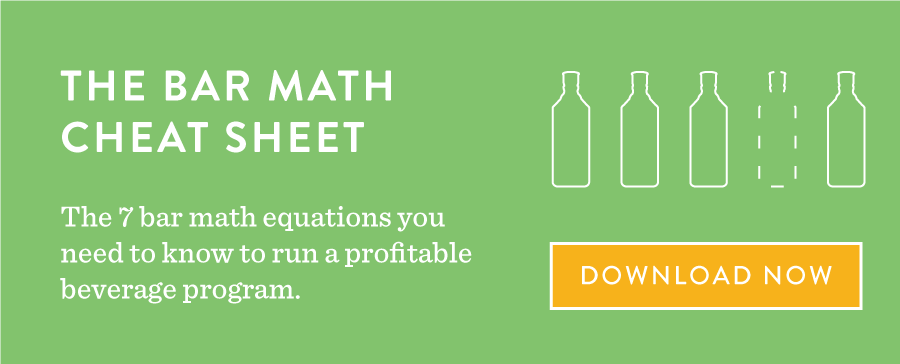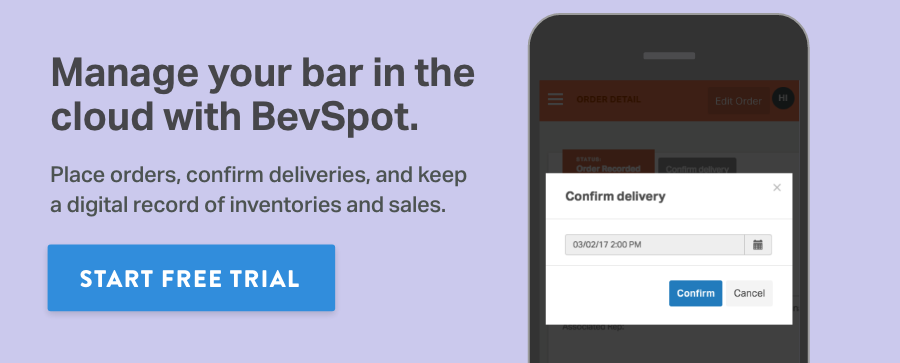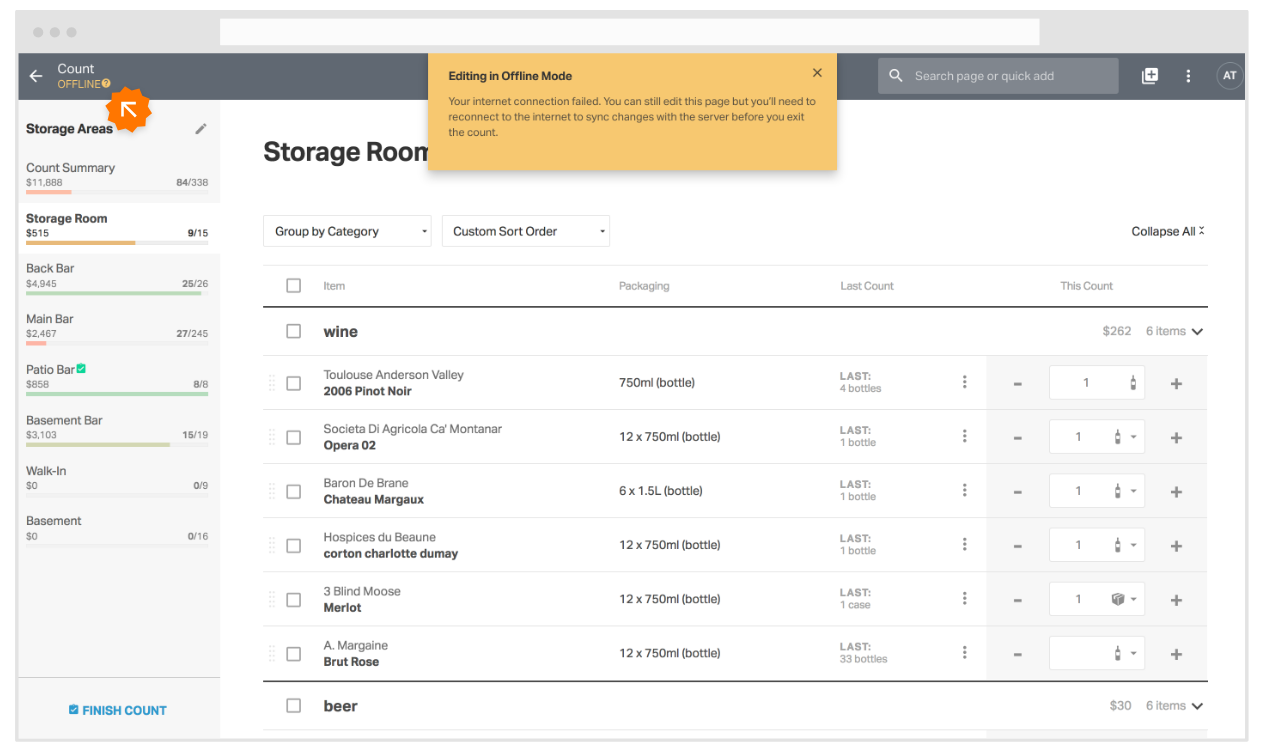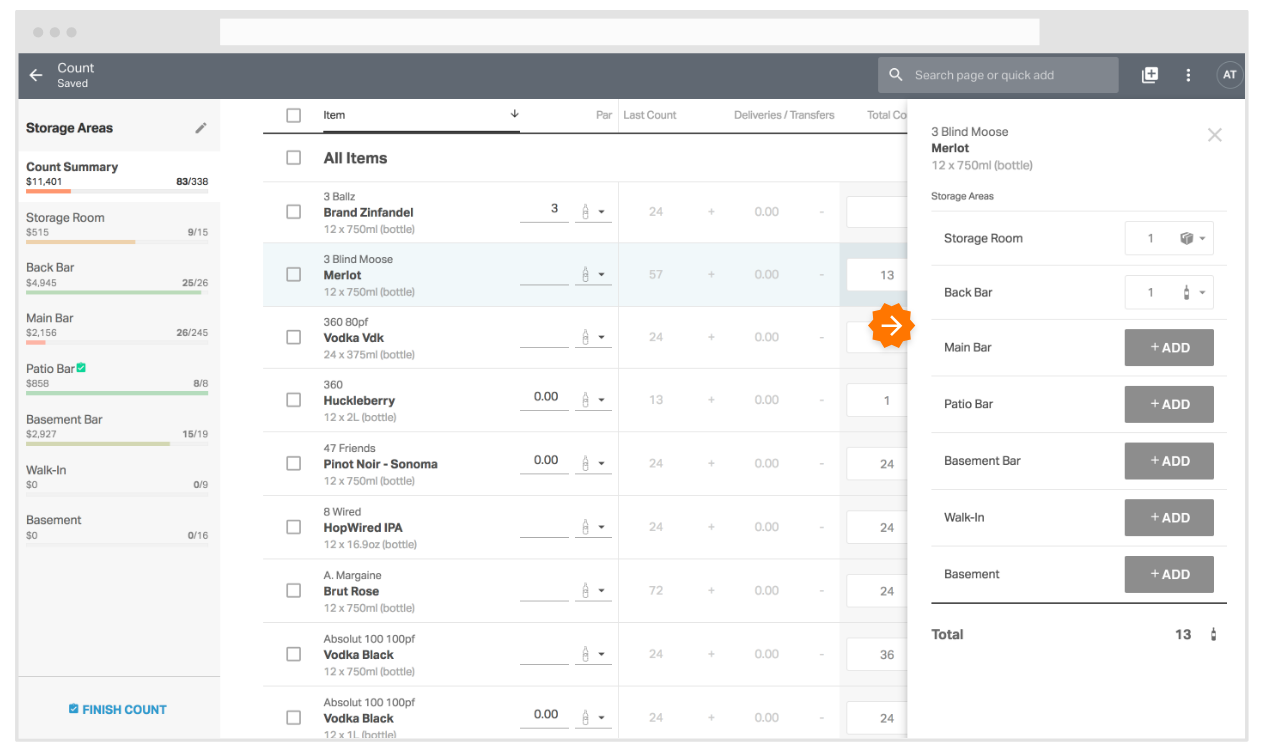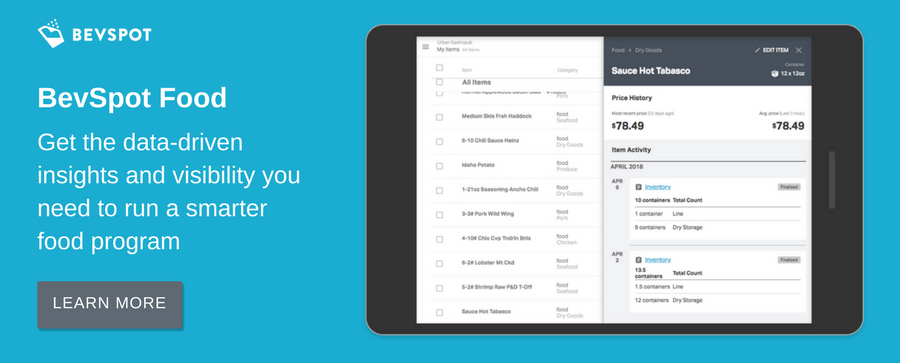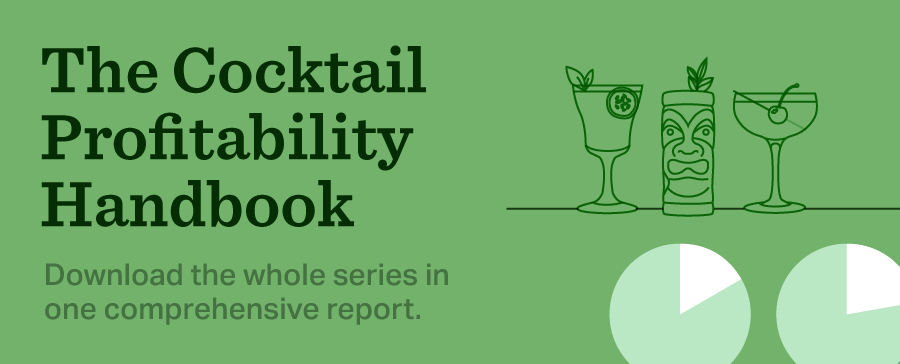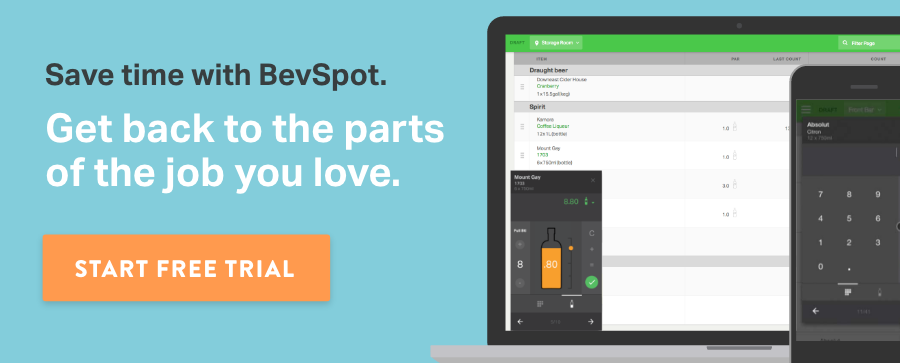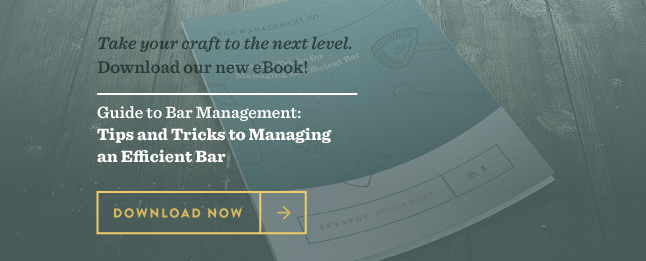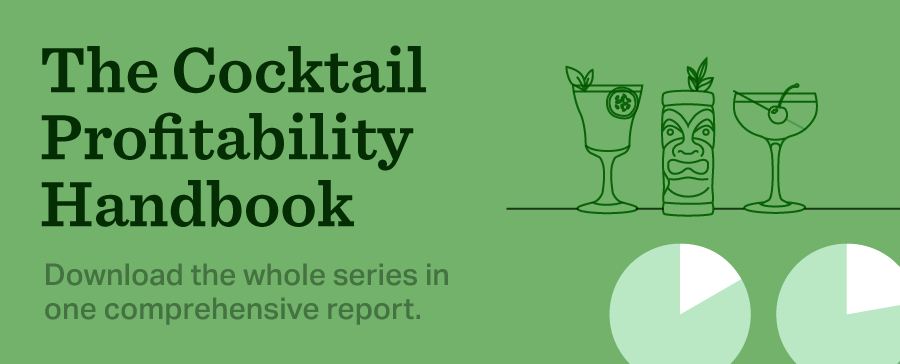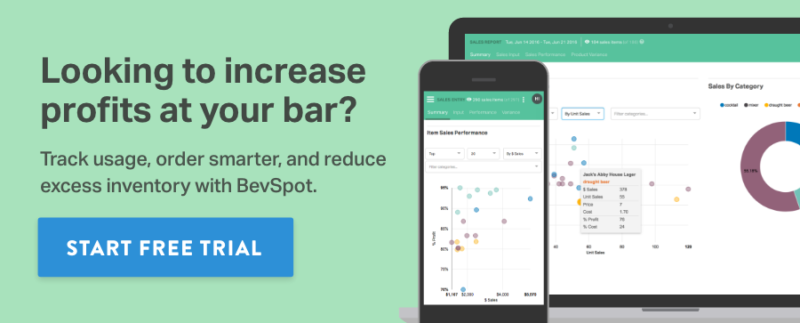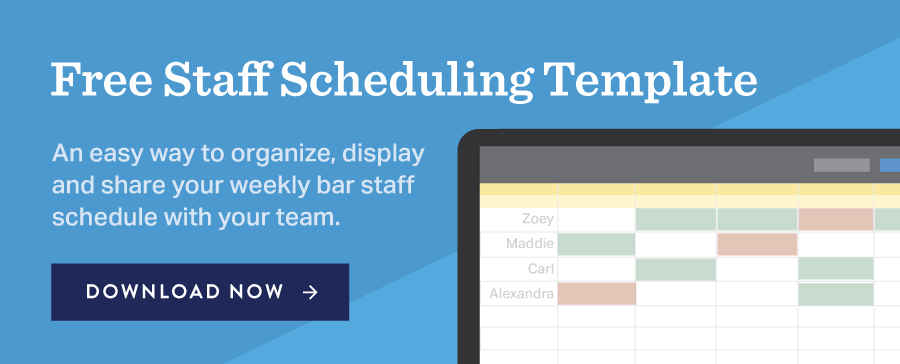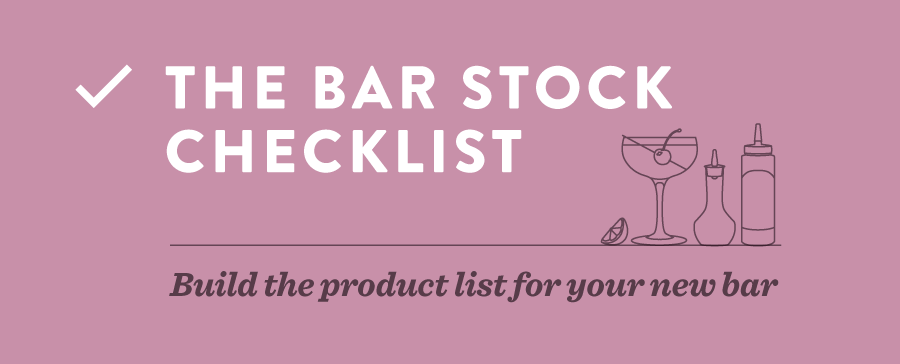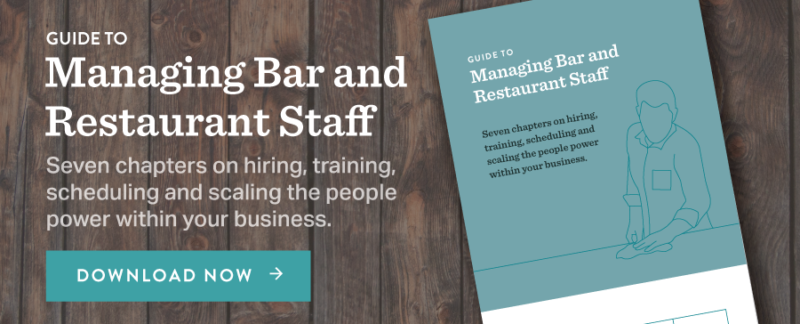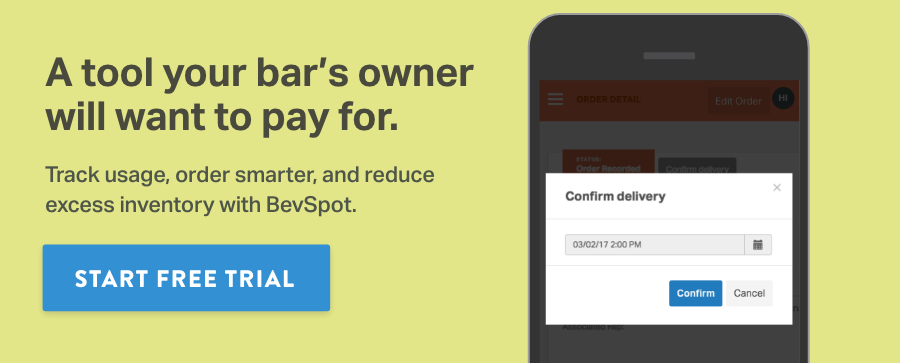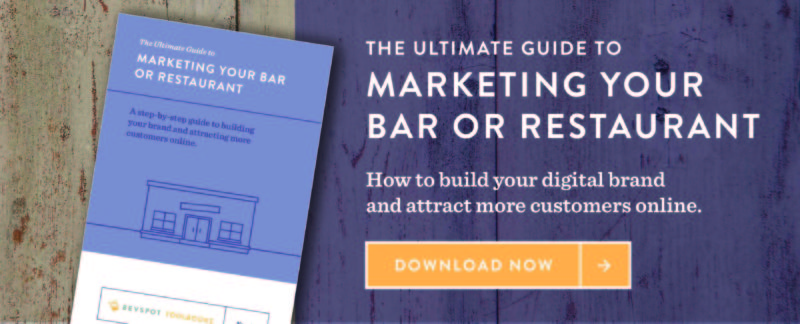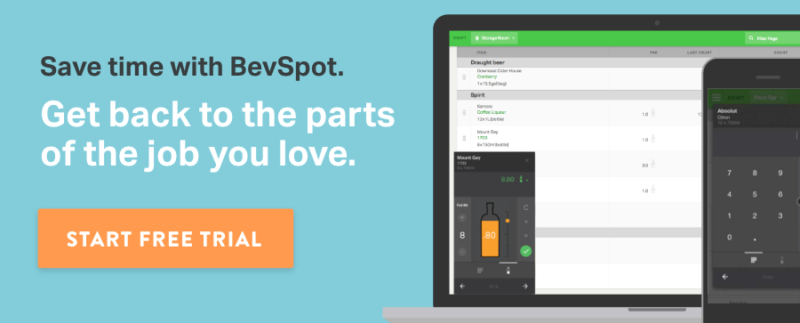Pour Technology, Not Just Drinks: Why Bar Accountants Need Tech
HITENDRA PATIL has WORKED FOR OVER 25 years in the financial services industry. HIS PREVIOUS TEAM PROVIDED DIRECT ACCOUNTING SERVICES TO MANY CLIENTS, INCLUDING SEVERAL FINE-DINING RESTAURANTS. He currently helps other accountants with accountantsworld.
Why Bar Accountants Need Tech
Have you ever seen a vital signs monitor in a hospital room? Clinicians use its alerts to proactively manage patient health in the moment. While beverage management is not as complex as the human body, it can be just as lethal to the health of a business if not managed professionally. Real-time bar accounting is the best way to avoid failure, and technology is your ‘vital signs monitor’ for identifying the critical warning signs in the moment.
Restaurant accounting often comes too late
The team in my previous company provided a lot of restaurant accounting work for several fine-dining restaurants across the country, including inventory accounting and larger business valuations. In either case, we found that these tasks would be completed too late for the businesses to prevent serious problems. The reason? It was a manual process.
Restaurant staff start by handwriting their current inventory in pre-printed Excel tables, which are prone to individual error. We then enter the data into our own Excel spreadsheet, and apply the last purchase rates to compute the value of inventory on hand. We then enter those values into our accounting software and use it to compare the establishment’s sales numbers to compute the actual profitability of all liquor, beer, and wine sales. As the accounting back-office for a restaurant or bar, our job would be to provide the owner with the best course of action when presented the data from inventories and sales reports.
However, to be totally honest, after-the-fact accounting like this can’t prevent losses—it can only identify possible issues and give owners recommendations for preventive or recuperative actions. To get a deeper real-time analysis, a different approach is necessary.
The benefits of technology for bars
The internet and cloud technology has transformed accounting to operate in real-time. With this technology, you can:
- Get real-time trends in your inventory usage. With this data, you can order the right product in the moment, reducing cash stuck in inventory and leading to better cash flow management. This ultimately leads to increases in profitability as your financing cost for operating expenses go down.
- Get real-time data comparisons of your beverage costs and sales figures, such as pour cost trends across days of the week and time of the day, bartender performance, etc. This data informs owners and managers when costs increase, and helps them analyze why.
- Compare market prices.
- Join buying consortiums to reduce purchase costs.
- Quickly identify slow moving items to create promotions that free up cash stuck in inventory.
Use technology to help your accountant deliver more value to you
Accountants are trained to think about numbers and identify the intelligence from those numbers. If you weigh them down with extra work to create data, they will have less time to give you in-depth business insights.
I have seen accountants help establishments become more profitable and save them from failure. The best ones use data to give owners the most effective advice. Owners, utilize technology to help your accountant deliver real, actionable value to you, not just financial statements.
Schedule 15mins to chat with a product specialist
Start a FREE Trial Today! BevSpot offers full product education and account setup for all customers! No card Information needed!
Introducing the Redesigned Inventory Experience
We’re rolling out big updates to BevSpot inventory—it’s faster, easier to use, and even works offline.
Over the last year, we’ve focused on creating a new design and engineering system that will help us build new, scalable features for our growing mix of customers and their unique needs. You saw the first signs of this implemented on the new My Items page, the Usage Report and the Excess Inventory Report.
Today we’re excited to launch a new, faster BevSpot inventory (now called Inventory Count), rebuilt from the ground up on our new design and engineering system, and based on extensive customer testing.
BevSpot Inventory Count: what’s new?
Offline mode
There are “hard to reach” spots in many restaurants—basements, walk-ins, creepy storage units—so we knew that it had to work in places without a solid internet connection. You can now quickly switch between storage areas, search on the page, and add products from My Items, even when you’re offline.
Simply load the page on any device while connected to the internet and start your count. When you’re done, move back to an area with a connection, and you’ll see a “Saving…” message as BevSpot automatically syncs your changes to the cloud.
Interface redesign
While everything in Inventory Count has been updated, it should feel familiar to current users. The biggest visual change is the new Storage Areas navigation and progress bars. All of your storage areas are visible on any device, featured on the left side of the screen on larger devices and in the header on smaller devices. The new progress bar and counter illustrates your count progress, as well as the dollar value of what you’re counting in real time, based on your current pricing.
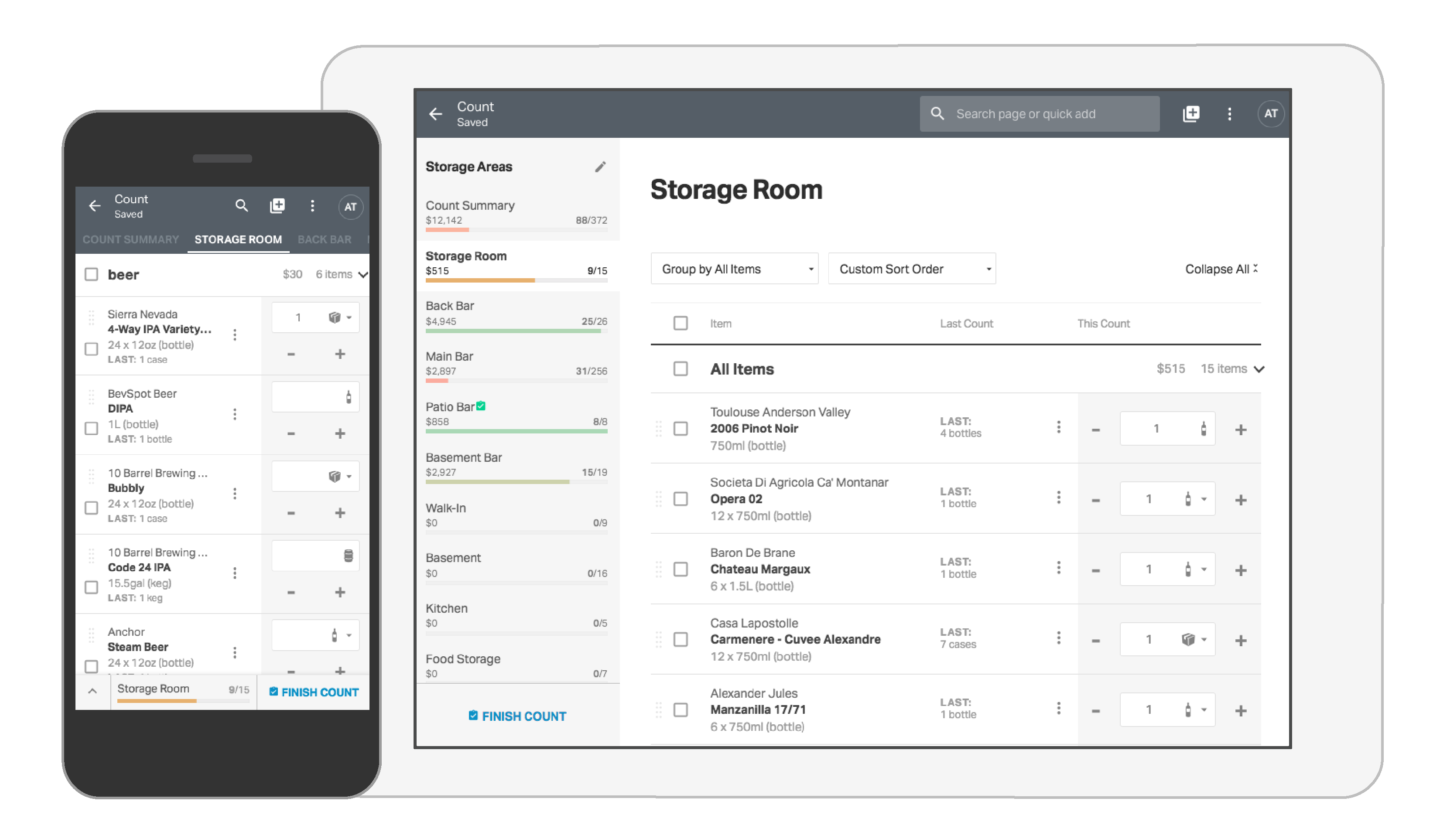
More customer-requested features
Some of the most requested features we get include the ability to add products to your cart straight from inventory and the ability to edit storage area counts on the summary page—both of which we’ve added in the revamped Count Summary page. From here, it’s easy to adjust counts and add items to different storage areas.
There are many other small improvements that make the whole BevSpot inventory experience better. Read the full detailed list here. Some of these improvements include:
- Inventory “locations” are now called “storage areas.”
- Edit pars from the summary page. Pars are now total, not broken out by storage area.
- The new negative usage warning links directly to a summary view sorted by usage, so you can take action on a possible count error.
- Managing storage areas is faster and easier—drag-and-drop to reorder the areas.
- “Assign items” is accessible from anywhere in the count and features an improved interface for bulk adding items to different areas.
- You can now rearrange by count order. Choose to reorder your storage area to match the order you last counted it in, preview before you commit, and drag-and-drop from the preview to further tweak the order.
What’s next?
We’re rolling out the improved BevSpot inventory over the next month and a half to ensure the best experience for all of our users. You’ll receive an email and see a notification on your BevSpot Dashboard about a week before your migration date.
Get the new, now!
However, if you want to try the new experience sooner—shoot us an email at cs@bevspot.com and we’ll add your account to the next update release.
Join the Early Access Tester Program
Are you interested in helping us test future features? Not afraid of running into a bug here and there? Email usertest@bevspot.com and let us know you want to be on the list.
We’ve been testing these new inventory features with a select group of early access testers over the past few weeks and have already integrated a bunch of their suggestions and feedback into the launch version—make your mark on BevSpot, join the program.
As always, feedback wanted!
We’re always looking for more ideas and insights—our product is made for you, so tell us what you want! Use the Contact link in the main nav of your account to fill out the feedback form. We read every single submission and will follow up with you if you’d like.
More resources
- Read the full list of changes in our Release Notes: Big Updates and a Redesigned Inventory Count
- Read the full Inventory Count documentation
Schedule 15mins to chat with a product specialist
Start a FREE Trial Today! BevSpot offers full product education and account setup for all customers! No card Information needed!
Get the Inside Scoop from a Bar Mystery Shopper
Learn what a professional bar mystery shopping service looks for…
You might be familiar with retail mystery shopping or “secret shopping,” where a trained individual goes into a store pretending to shop, but actually covertly critiques the establishment’s service, salesforce, décor, cleanliness, and overall shopping experience. But, you might not know that these same mystery shopping exists for the bar industry. Quin McCray is the founder and owner of Liquid Solutions, a company in Springfield, Massachusetts that provides a mystery shopping service which they dub Integrity Reports. We spoke to him to learn more about why a bar might be interested in bringing in a mystery shopper and common issues that bar mystery shoppers find.
Why would a bar owner or manager choose to hire a Bar Mystery Shopper?
“Many do it as a way to have a second set of eyes that can come in and give their establishment and employees and unbiased opinion,” says Quin. “Another one of the recurring reasons is that many bar owners have never worked their way through the ranks; most people would never think of opening a plumbing business if they’ve never worked as a plumber, but many open bars with no actual experience.”
Quin himself has tended bar professionally since 1993, and his employees who perform mystery shops all have at least 10 years experience in the bar industry. “As a result of our audits, we have helped bar owners to implement inventory controls, calculate liquor costs, and standardize procedures.”
Even if you’re more seasoned, mystery shopping can be valuable: “Often, the owner and/or manager lose attention to the small details because they are always there, and as a result, they become oblivious to certain things. For example: as time passes, the cleanliness of the bar starts to suffer, the level of service begins to decline, etc. While these are easily visible to new customers, they become transparent to the staff.”
What are the specific criteria a bar gets graded on by a mystery shopper?
When Quin or one of his employees performs a mystery shop, these are the things they are evaluating you on:
First impressions
The parking lot
- Is it well-lit?
- Is there garbage?
- Are people going to want to go there if they’re not locals?
Signage
- Is the establishment’s sign well-lit?
- Can I see it from the road?
Decor and atmosphere
- Are the lights too high or too low?
- Is there music? Is it overpowering?
- Is the bathroom clean and well-maintained/stocked?
Bartending technique
Hospitality / bar knowledge
- Am I greeted and waited on in a timely manner?
- Did the bartender seem knowledgeable and friendly?
- Could the bartender field basic liquor-related questions? (e.g. recommending a nice bourbon)
- Do they know about some of the less-known products on the bar?
Pour
- Is it an ounce and a quarter pour, or an ounce and a half pour?
Ethics and professionalism
- How is the staff handling the cash? Is it being done ethically?
- Is the bartender making some sort of note about each drink being ordered?
- Do I overhear shop talk between employees?
When testing a bartender’s drink knowledge, Quin will typically order a drink that a bartender should know. He won’t go as far as a Mint Julep, but he might ask for an Old Fashioned, or a Godmother or Godfather—even something as simple as a Scarlett O’Hara.
At the end of the shop, Quin writes up a four-page evaluation providing written evaluations for the various categories and providing a numerical score. Sometimes, bars will have him or one of his employees make a repeat visit to evaluated bartenders during their shifts as a way to keep them honest.
Why pour size so important?
If you use BevSpot’s products, you already know how important pour sizing is, but Quin cannot emphasize it enough.
“Like all tipped employees, bartenders want to make their customers happy and, in turn, increase their gratuity. While most people would never think of giving away a steak or a television, bartenders tend to feel differently about spirits.”
“To them, it’s just liquid in a bottle. To the bar owner, it’s their revenue source; how taxes get paid, lights stay on, and payroll is met. The most common problem I see is bar staff over-pouring drinks and/or giving away a large percentage of drinks. Often, they don’t equate over-pouring to theft; they attribute it to customer service.”
To put it in perspective, Quinn breaks down the math of a hypothetical example:
Chase works at a neighborhood bar 4 nights a week. In order to increase his tips, he over-pours drinks. Instead of using his company’s agreed upon 1.25 oz pour, he uses a 1.5 oz pour. Chase goes through 5 bottles a night. How much does this cost the bar?
Normal pour:
33.8 oz bottle (1 liter)/ 1.25 oz drink = ~27 drinks per bottle
Over pour:
33.8 oz bottle (1 liter)/ 1.5 oz drink = ~22 drinks per bottle
If the average cost per drink is $5.50, the bar loses ~$27.50 per bottle in revenue.
If Chase goes through 5 bottles per shift, the bar lost ~$137.50 per shift.
In a week, that’s ~$550 in lost revenue, and over the course of a year, it’s ~$28,600.
What types of steps can bar owners take to help resolve these problems?
“I would start with creating checklists for the managers and bar staff,” Quin says. “The manager’s checklist should include items such as checking the lighting outside of the location, ensuring that trash and other debris is not visible to your clientele, periodically checking the restrooms and temperature of the coolers, ensuring routine maintenance is being conducted, and implementing inventory controls.”
Schedule 15mins to chat with a product specialist
Start a FREE Trial Today! BevSpot offers full product education and account setup for all customers! No card Information needed!
Industry News Roundup: Bars Tackle the Busy Thanksgiving Eve Festivities
When one of the busiest drinking nights of the year rolls around, it’s not business as usual.
Thanksgiving Eve, otherwise known as Blackout Wednesday, is one of the most famous drinking nights of the year. It’s a recipe for a fun night out; we’re traveling home, seeing old friends and family, and no one is working the next day. But, for the bars that host the droves of revelers, much more goes into Thanksgiving Eve than just showing up and raking in the cash. Lucky for us, a number of bars are sharing their secrets for managing Thanksgiving Eve. While the night has passed, their tips are worth stowing away for next year.
The data behind Thanksgiving Eve
How much crazier is Thanksgiving Eve from the average night out? Upserve (one of BevSpot’s partners) analyzed the 2016 data from more than 3,000 restaurants and found that both liquor and beer sales increased by 114% and 270% respectively. Food sales also increase, but only slightly at 28%. It’s clear that Blackout Wednesday is more about the drink than the food.
How some bars are creating buzz around Thanksgiving Eve
So how did bars and restaurants prepare for Thanksgiving Eve 2017? It’s critical to start the night with adequate manpower. As Cassaundra Kennedy, manager of the Lodge in Tampa, Florida, told their local Fox affiliate, “We staff tonight like we would staff a big night, like New Year’s. It’s one of our busiest nights.”
Other bars are trying new tactics to bring even more people through the door. City Park Grill in Petoskey, Michigan heightens the atmosphere by hosting large music acts. “It’s my opportunity to try and bring someone bigger because I have a lot of people here to help cover it,” said manager Peter Sladick.
City governments are also getting involved in drumming up excitement about Thanksgiving Eve. According to the Washingtonian, nearly 200 bars throughout Washington, D.C. were approved for a late night extension that enabled them to stay open until 4 am on Thanksgiving Eve, two hours longer than the typical 2 am closing time. The late night holiday exception was first implemented there in 2012 before Columbus Day as a way to raise additional revenue from alcohol sales.
Thanksgiving Eve safety
We’d be remiss not to mention the safety concerns that come with a night of increased drinking and how some towns are addressing it. Uber partnered with Staten Island District Attorney Michael McMahon to create the SI Safe Ride initiative. “Between 6 pm Wednesday, November 22, and 6 am Thanksgiving, Staten Island residents can use the promo code ‘SISAFERIDE’ in the Uber app for two free rides worth up to $15 each.” AAA has been offering their Tow to Go program in select regions since 1998. This program offers a free, safe ride for you (and your car) to a location within 10 miles. Promoting available safety initiatives is just as important as promoting drink specials on Thanksgiving Eve.
How did your bar celebrate the occasion? What worked? What didn’t? What will you do differently next year?
How to Find the Right Location For Your New Bar
Committing to the wrong spot can sink a bar before it even gets off the ground…
Last month, we helped you make sense of the complicated licensing and permitting process to open the bar of your dreams. Now, with the complicated legal matters out of the way, we can get to the fun stuff—finding the right location for your bar.
Choosing the wrong location, however, can be a disastrous misstep. So before rushing out to sign a lease on the nearest empty space, here’s how would-be bar managers can lock down a location.
Understand local demographics
Who do you want walking through the door on a regular basis? We ask because, as one survey of 800 U.S. consumers found, “pubs & bars are considered less essential and will therefore struggle to attract as much business from outside the immediate local area.” It’s critical to choose a location near the people you wish to attract. Census data is helpful for this, but the best way is to get to know the different communities in an area you’re eyeing and choosing the best one for your business.
Research the local competition
Before establishing roots of your own, get to know the neighborhood’s business climate. For instance, if a neighborhood you’re eyeing has 10 bars with similar concepts, perhaps that’s not an ideal locale. That said, being near to your competition can be a good thing. If a similar bar is operating successfully in the area, they could serve as proof of concept for your own.
Consider the building’s bones
The physical space itself matters. Choose a location with clear visibility so passersby can’t miss your bar. Unless you’re going for a hidden-in-plain-sight location like Portland’s Novare Res Bier Café. Consider available parking and public transportation around you. Without either, you have to rely entirely on foot traffic, which can work, but it’s limiting. When it comes to the interior space itself, look for a building that best aligns with your business plan.
Sign on the dotted line
Signing a lease is arguably the most important step in your location search. But, be prepared! Before signing anything, calculate what you’re able to realistically afford. You don’t want to lock yourself into a lengthy lease before you know how successful you’ll be in the given location. This is especially important for new bar owners who can’t rely on their reputation to bring people in the door.
We’re interested in hearing from you too. What has pushed you away from, or drawn you to a location for your bar? How can bar owners prepare themselves for the hurdles that may come their way?
Schedule 15mins to chat with a product specialist
Start a FREE Trial Today! BevSpot offers full product education and account setup for all customers! No card Information needed!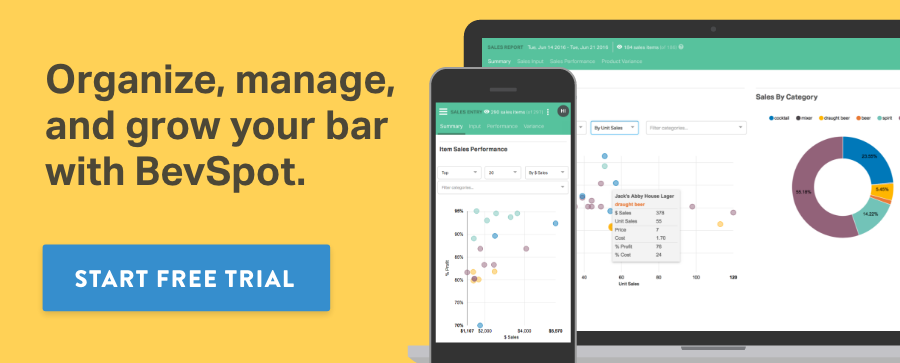
How to Address Sexual Harassment in the Bar & Restaurant Industry
Over the last few months, news and social media have been running hot from the conversation around sexual assault and harassment, especially within the food & beverage industry.
Whether it’s allegations against John Besh and the “bro culture” in the back of house, to inappropriate behavior from guests, we feel like the subject deserves an in-depth conversation with some outspoken voices in the industry. We interviewed three industry advocates and activists who work to educate people about how to correctly address sexual harassment to get their take on how to address sexual harassment in the bar and restaurant industry.
- Robin Nance, Senior Brand Ambassador of Beam Suntory
- Mark Schettler, GM of Bar Tonique, President of Proof Positive Project, and USBG NOLA Chapter President
- Chazz Madrigal, Co-founder of 86 Silence and Beverage Director of No Comply Food Group
The following has been edited for clarity.
How long have you been part of the restaurant industry?
Robin:
Twenty-seven years.
Mark:
A decade, but inconsistently until the last 8 years.
Chazz:
I was raised into it. If we get less literal about it, I have been professionally working in bars and restaurants since 2002.
Throughout your careers, how have you seen the way we handle sexual harassment and assault change? Has it changed?
Robin:
I honestly hadn’t seen much change until recently and it’s not so much a change. It’s just that people are starting to talk about it openly and realizing it needs to change.
Mark:
The extent to which it’s changed is really more due to the change in venues I’ve worked in as opposed to the larger culture. The instances aren’t necessarily going down; it’s just that more incidents are being reported. There’s a lot of dehumanization that’s evident in both the employee-guest exchange and the all-powerful management structure we tend to have—those constants makes a change in the culture really difficult to achieve.
Chazz:
In the last, say, six years or so, rumblings turned into conversations within the Portland and Seattle bar communities. These conversations led to people sharing their stories and it kind of spread from there. Now, we’re in a place where there are multiple groups of people all over the country openly talking about this real problem. It’s a very exciting time to be in this industry as someone who cares about issues of equality at large.
How have you attempted to change sexual harassment within the industry?
Robin:
I’m constantly educating myself. I do my best to stand up for victims and try to figure out ways to effect change, like sponsoring educational seminars run by experts.
Mark:
I’ve put together plenty of seminars and talked around the world addressing this issue. I’ve done tons of fundraising, raised thousands of dollars, had conversations with people, and helped identify date rape situations. But, honestly, I don’t know if I can answer how I’ve changed it, because I don’t know if I have. Maybe a handful of people, but who knows. Culture change is a mostly intangible pursuit.
Chazz:
Moving into management at event spaces/night clubs, my eyes were thrust wide open to this behavior. Not only did I see sexual harassment and assault happening, I saw it on a nightly, almost hourly basis. I ended up sitting down with both ownership and our security staff to let them know what we were not going to tolerate it. We had to expand to not only looking out for intoxicated or physically aggressive people, but sexually aggressive, predatory people as well.
How do we combat this, unfortunately, normalized behavior? Do you have techniques or trainings that have worked for yourself or others?
Robin:
Honestly, we have to change the entire bar/restaurant culture. Sexual harassment training needs to be updated and required by law. We have to address behaviors in the moment, which means managers need to be trained in supporting and believing their staff, whether the harassment is coming from another team member or a guest.
Mark:
The single biggest thing I’ve witnessed is how intractable and omnipresent this thing really is in our culture. We held a seminar at the USBG conference; at the time, nobody ever had professionals in the room for these conversations, but we brought in three and had almost a dozen on-hand to talk to people afterwards. We were able to say, “This is credible and the safest space we could possibly create to engage this.” But, after the 2 hours, I’ve never felt air as charged as I did in that room, and we only just did awareness. No matter how it’s achieved, this industry needs more awareness around this issue.
Chazz:
Holding yourself and your peer group accountable is really important. I forced myself to analyze my own actions and found the results to be disheartening. I realized I had not done enough of the actual hard work of looking at my own behavior and that there are plenty of things on a micro level that enable the culture on a larger scale. We cannot change things systematically without admitting that we were checking out the new hire, casually dismissing an ex as “crazy,” or allowing someone else to make one of a million similar comments.
How can bars/restaurants do better to support and empower their harmed employees?
Robin:
Get trained. You can’t really be supportive if you don’t have the right tools to help you deal with victims. You may think you’re doing the right thing when in fact it’s just the opposite. My advice would be to have professionals come in and train your whole team.
Mark:
As the leader, you don’t get to wait for things to go sour. Start educating yourself and stop thinking you’re an expert. Don’t keep it in house and get an expert to work with you on it. Show your support and how far you are willing to go to make sure everyone is happy and safe. What could possibly be the excuse for not doing that?
Chazz:
Have a plan in place beforehand. I can’t stress the importance of having policy with clear actions in place before you have to deal with an incident in your restaurant. Once you are already there though, support your staff by believing survivors. If they want to make a report with law enforcement, offer to go with them. If they need to go get a restraining order, go with them. If they aren’t comfortable with that, make sure you have the people who can.
Thank you to our panelists. I hope all of us in the industry can take away some actionable next steps from this conversation. Mark said something to me that ends us on a good note, “Putting in the work to really see somebody is the most important thing you can do to foster positive change in someone else.”
Here are some resources to help further tackle sexual harassment in the industry:
How To Combat Sexual Harassment
Safe Bars Training
Bartenders Against Sexual Assault
We’d like to hear from you: How have you worked to stop sexual harassment at your bar or restaurant?
Schedule 15mins to chat with a product specialist
Start a FREE Trial Today! BevSpot offers full product education and account setup for all customers! No card Information needed!
How to Bring Your Bar Back From Disaster
No matter how much you plan, something can still go wrong.
Over the last few months, record-breaking storms have swept across the southeastern United States. The storms’ wake has brought stories of destruction and loss, but also of resilience and hope. If your establishment has been affected by natural disasters or accidents, there is a way back. We’ve talked to a few people and found some best practices for bouncing back:
Steps to rebuild your bar after disaster
- Get clean, get inspected
Reopening after a crisis, whether it’s a fire, flood, or tornado, likely requires a degree of renovating and cleanup. Since you’ll have to be re-approved by a health inspector, take care to complete all renovations and cleanup before you apply for the opening inspection. - Be assertive with insurance claims
Hopefully, you had insurance coverage before the disaster happened. If so, know who to call and be persistent. In a perfect world, a quick call to your insurance agent fixes all problems and gets you the money you need to get back on your feet. In the real world, keep on top of agents. Don’t be aggressive or disrespectful, but make sure they know you’re there. - Get your staff involved
Disasters affect not just you and your business, it affects your staff as well. It will be a challenge balancing the time when your staff is back, but you aren’t taking in revenue yet. But, uniting as a team will help the whole bar get back on track.
Reconnect with your community
Following a disaster, everyone wants to get back to a sense of normalcy. That includes both your staff and the community at large. If you can, set yourself up as a meeting place for the community. Welcome people in and let them relax, charge phones if need be, enjoy themselves in a situation where joy might not be readily found. You’ll find yourself feeling better and glad for the work as well.
For your employees affected by the disaster, support them by finding work to keep their hours up, partnering with sister locations if part of a franchise, or fundraising. Keep their spirits up, and let them know that while work is important, it’s ok for them to worry about their own lives first.
Before the disaster: Four ways to prepare for the worst
Preparing for future disasters is just as important as the recovery. You can’t completely flood-proof or fire-proof a building, but you can take measures to ensure the rebuilding and recouping of any losses is easier in the future.
- Record and backup everything digitally
Keep digital records of everything, such as vendor, employee, and insurance records. Not only is paper easily destroyed, but you most likely won’t have time to grab records in the moment. You should also backup those digital records on cloud software, like BackBlaze or Google Drive, to ensure recovery when hard drives are destroyed. - Know what you have on hand
If anything in your bar is destroyed, insurance will need proof of value lost. In addition to important records, keep a separate document (backed up on the cloud) of your equipment and supplies, including model and serial numbers where applicable. Keeping an exacting inventory will also help you in future claims. - Get the right insurance
Speaking of insurance, make sure you have the proper insurance. If you live in a place prone to floods or other natural disasters, look into insuring yourself against those in addition to your basic plan. - Know who and how to communicate
We’ve preached it throughout, but communication is key. Build an emergency contact list that includes insurance agents, emergency personnel, and employees. Make sure everyone knows who they are supposed to contact, and what everyone’s responsibilities are in case of emergency.
Nobody longs for the flood, tornado, earthquake, or fire to strike. But, it’s how you plan ahead and the steps you take after the disaster that will make recovery just a little bit easier.
Schedule 15mins to chat with a product specialist
Start a FREE Trial Today! BevSpot offers full product education and account setup for all customers! No card Information needed!
3 Resources for Becoming a Master Mixologist
How do you get to the next level of mixology?
There are many aspects to being a standout bartender. The craft cocktail training hub A Bar Above says that bartending is “all about hospitality and the guest experience”—serving guests drinks, bar managing atmosphere, and building relationships with patrons. An increasingly essential part of good bartending is becoming a master mixologist.
Master mixologists are scientists (literally, chemistry is involved) and an art. You can teach yourself or seek out qualified teachers. It all depends on your preferred learning style. Here are 3 resources where you can train yourself up:
Online resource hubs
There are a multitude of online educational resources to become a master mixologist. Mentioned above, A Bar Above offers an astonishing array of mixology guides, like handy cheat sheets and articles about cocktail construction organized from beginner to advanced.
There are also countless great blogs specifically for bartenders about refining their craft. Some of the blogs that do an exceptional job covering mixology in-depth include:
If podcasts are more your style, there are a number of options there for you as well.
Cocktailing books
Even in the age of the internet, books remain one of the best and most useful ways of bestowing knowledge to up-and-coming bartenders. I recommend:
- The Bartender’s Black Book: A classic.
- Death & Co: Modern Classic Cocktails: Boasted as the “definitive” guide to contemporary cocktail-making, brought to you by modern legend Death & Co. in New York City.
- The Ultimate Bar Book: The Comprehensive Guide to Over 1,000 Cocktails: Experienced bartenders that I’ve talked to have pointed to this as a go-to resource for leveling up their mixology skills.
Bartending mentor
In the end, there’s nothing better than hands-on experience and guidance, but you often have to ask for it. If you are working with someone whose skills you really admire, observe their techniques and ask thoughtful questions. They may even be willing to make you a pseudo-apprentice.
Also, check out your local United States Bartender’s Guild—I know that ours here in Rhode Island provides regular workshops with various spirit companies and opportunities for ongoing mixology education. And when bartenders get together for social meetups, they often end up sharing tricks and new ideas they’re testing out with each other.
Whichever format helps you learn best, maintaining a proactive, receptive attitude is key, and don’t be afraid to experiment and make mistakes along the way! What are your favorite go-to resources for mixologists? Share in the comments below.
5 Simple Ways to Avoid Bartender Burnout
The physical, mental, and emotional wear and tear of serving thousands of people in a given week takes a toll on even the strongest will.
As we approach the holiday season, bartender burnout often flares up among service staff. This is the time to think ahead about how to ease your team—and yourself—through the busiest season of the year in a way that saves everyone’s sanity. Here’s five simple ways to avoid that dreaded bartender burnout:
1. Disconnect from electronics
I don’t know a single one of us who hasn’t stayed up late watching Netflix after a shift. But all that screen time is hurting us. I’ve learned one way to combat the mental burnout is to disconnect from electronics. The science reinforces how important it is to disconnect from our screens, especially when it comes to sleep.
Find a screen-less nighttime routine that helps you escape work, such as reading a book or listening to music. De-stressing comes faster when your mind and eyes aren’t working overtime.
2. Sleep
Too little or too much sleep is bad for your health. Sleep deprivation destroys your focus, which can lead to sloppy technique or broken glasses. Even if you have a close-open shift, plan ahead. Our bodies have a natural circadian rhythm, which determines when we feel sleepy. I’d personally recommend sleep apps, like Sleep Cycle or Rise Alarm Clock, that help you stick to a regular sleep schedule and don’t jolt you out of bed.
3. Hydrate
How many of you have ever felt like a prune after a shift? It can be hard to stay hydrated when your bar is five deep, the glass racks have to be run, you need another case of wine, and the beer keg just kicked.
Try to combat dehydration by keeping a water bottle constantly within reach. Food regulations generally require server drink containers to be covered and have straws. Bar managers, help your staff out by buying them regulation-safe water bottles and checking in to make sure they are getting water throughout their shifts.
4. Lay off the booze and eat healthy
So many of us celebrate a busy night of kicking ass on the bar with three or four post-shift drinks—and we are worse for it. Not only does alcohol make you more dehydrated, it also inhibits proper sleep cycles. Do yourself a favor; skip the espresso martini or the rum and coke, stop after the first round, and switch to water.
Likewise, watch what you eat after work. Skip the fried and junk food at night. Yeah, a lot of bars and restaurants shift to a late night menu, but find a better snack than a plate of chili cheese fries.
5. Take a break
As an industry, we rarely take vacation. After a decade of bartending, I’ve learned it’s important to schedule some time off, especially after a particularly busy season. Whether it’s a quick getaway or a long trip across the ocean, give yourself some time off to relax and unwind. There’s also nothing wrong with a staycation. You deserve time off. Nobody can work 365 days and avoid burnout. Even if you’re a small staff, there’s no reason you shouldn’t take charge of your own work-life balance.
These five tips will help you establish a better system to care for yourself and your staff, whether it’s the holiday season or a slow summer. We take such great care of our customers, it’s high time we did the same for each other.
What are your personal tips and tricks for avoiding bartender burnout? Let us know in the comments.
Schedule 15mins to chat with a product specialist
Start a FREE Trial Today! BevSpot offers full product education and account setup for all customers! No card Information needed!
Well Stocked: How to Stock Your New Bar
So you’ve decided to open a bar…
You speculated with friends over drinks, laughed over possible names, found the capital to get this whole pipedream off the ground, and here you are—opening night. But, which beers, wines, and spirits should you have in your bar inventory system? You’re going to need items on your shelves that appeal to a broad audience. Our comprehensive product checklist below illustrates how to stock a bar to keep patrons coming back time and time again.
Start Your Free Trial With Bevspot Today!
Before we begin, here are some terms to keep in mind:
Well – Spirits you’ll use when patrons don’t name a spirit brand in a drink order. (Example: Gin and tonic.) Your well bottles are often the best deal for both the bar and the customer.
Call – Spirits you’ll use when patrons do name—or “call”—a specific spirit brand in a drink order. (Example: Tanqueray and tonic.) ‘Call’ bottles tend to be your more popular brands, but are generally not the most expensive.
Premium – Also known as top-shelf, these items are usually the most expensive and carry a more refined reputation. These bottles are often on display on your back bar or in display cases to pique customers’ interest.
Blanco – An aging term that applies to tequilas and some rums. When a spirit was not aged in barrels for any extended length of time and carries a blank (blanco) or clear hue to it. Brands like Patron also use the term ‘Silver’ for these items.
Reposado – An aging term that applies to tequilas. It means the spirit was aged in oak barrels for a limited period of time. Reposado tequila is smoother and has a light woody note in both the color and flavor profile.
Anejo – An aging term that applies to tequilas and some rums. It means the spirit was aged in oak barrels for at least one full year. Anejo spirits tend to be more expensive and refined than their less-aged counterparts, and are not used as much in mixed drinks or cocktails.
The bar stock checklist: The essential spirits to stock your bar
Spirits 
Vodka: 2-3 bottles
- Well
- Call
- Premium
If you want a flavored vodka, stick with a brand of citrus vodka—it’s the most versatile.
Gin: 2-3 bottles
- Well
- Call
- Premium
Aim to map your gins around the intensity of the botanicals on the palate.
Rum: 2-3 bottles
- Light
- Amber/dark
- Spiced
Try to stock multiple kinds of rum to keep a wide variety of rum drinkers happy.
Tequila: 3 bottles
- Blanco
- Reposado
- Anejo
Tequila quality can vary drastically. Make sure to test out a few samples.
Whiskey: 4 bottles
- Bourbon
- Rye
- Irish
- Scotch
You can, and probably should, expand your whiskey selection once you have a better understanding of your customers’ tastes.
Vermouth: 2 bottles
- Sweet
- Dry
You’ll most likely be using more sweet vermouth than dry. Try a premium product like Carpano Antica to up your Old Fashioned and Manhattan game.
Triple Sec: 2 bottles
- Well
- Cointreau/Combier
Triple Sec is easy to miss when stocking your bar, but it’s a key ingredient in many more drinks than you’d think.
Bitters: 2 bottles
- Old Fashioned
- Orange
This is one area where you don’t need to branch out too far. Stick to Angostura Old Fashioned bitters and Regan’s Orange Bitters to get started.
Wine
Red Wine: 2 bottles
- Light-bodied (e.g. Pinot Noir)
- Full-bodied (e.g. Cabernet Sauvignon)
Having simple options will keep anybody ordering red wine happy, because they will recognize the varietals.
White Wine: 2 bottles
- Light-bodied (e.g. Pinot Grigio)
- Full-bodied (e.g. Chardonnay)
Keeping in line with our options for red wine, make sure you are stocking at least one light-bodied white along with one richer, full-bodied option.
Sparkling Wine: 1 bottle
- Prosecco or Cava
Make sure you have one sparking option that is quality to pour out on its own, but also won’t overpower cocktails when the recipe calls for a sparkling wine topper.
Beer
Draught Beer: 4 kegs
- Light Lager/Pilsner
- Amber Ale/Pale Ale
- IPA/Double IPA
- Porter/Stout
If you pick your styles carefully, you can have a pretty full selection from just four taps.
Bottled/Canned Beer: 4-6 bottles
Think of your bottled and canned beers as a supplement to your draught program and don’t forget to stock at least one cider to have an option for gluten-free drinkers!
The last word
This checklist is a great way to stock a standard bar, but remember, your list should adapt. Add additional items as needed to expand your selection, or remove items that aren’t selling. Identify your opening products, work with your distributors’ sales reps to get your bar stocked properly, and good luck with the grand opening!
Is there anything you think we missed in this checklist? Let us know in the comments and learn more about bar management duties before opening!
Schedule 15mins to chat with a product specialist
Start a FREE Trial Today! BevSpot offers full product education and account setup for all customers! No card Information needed!
How to Start a Composting Program for Your Bar
Whether for the environment or for your bottom line, composting can help your business go green.
As the world becomes more environmentally aware, it’s becoming easier and more economical to go green. One method that impacts both the environment and your bottom line is composting food waste. So how does a bar or restaurant start a composting program?
Composting program basics
Composting breaks down organic material into useful and nutrient rich soil. Most food scraps (dairy, bones, and meat, and oil being major exceptions), drink garnishes, paper napkins, cardboard, foliage, and coffee grounds and filters can all be put into the bin.
Why bars and restaurants should compost
Food waste is one of the largest contributors to landfills in the world, accounting for 1.3 billion tons every year. Restaurants are responsible for around 40% of this waste globally. Composting allows this waste to return nutrients to the soil, keeping it out of landfills. Using compost-enriched soil also eliminates the need to use pesticides that can runoff and further harm the environment.
Running a compost program at your bar or restaurant has both financial and environmental benefits on a few different levels. Most establishments pay for their waste removal by the pound. Specifically, their waste is measured by how much of it is going to end up in a landfill. Reducing your establishment’s output to landfills through composting will have a direct impact on your bottom line.
How to build a composting bin
To create a working compost bin, follow these easy steps:
- Check rules and gather supplies
In-house composting laws differ from state to state, so make sure you’re familiar with all the rules and regulations. Gather the proper supplies, like biodegradable bin liners and a shovel or spade for turning the soil. - Add soil
Before you throw in any clippings, coat the bottom of the bin with a few inches of fresh soil so you have a base to work with. If you want to go the extra mile, add a new layer after every few buckets of scraps. Adding earthworms will speed up the decomposition process. - Fill with materials
Sort out your compostables and add them to the pile. It’s important that everyone has a firm understanding of what does and what does not go into the bin. - Turn
Make sure to disrupt and turn the compost every few days. Use the spade to move everything around and make sure the scraps are all breaking down. Also check that your pile stays moist so that the microbes are happy. - Repeat and watch
It can take months for batches to fully break down, but the wait will be worth it. Follow the above steps and wait for your compost to turn into a rich, dark and moist soil.
How to implement your own composting program
- Find a local partner
Will you run the compost entirely in-house or will you pay a carry-away service? Will you donate the compost and soil to a local collective, or does it make more sense to simply have it taken away and be done with it? Use sites like Find a Composter to connect with locals in your area to partner with. - Find a home for your compost
Composting is meant to be a beneficial process to your establishment. Don’t ruin the flow of your bar and kitchen by plopping a compost bin in any old place. Find a spot that fits into your space and is accessible for a majority of staff handling food. - Engage your staff
Get your team excited about the new initiative early on. Go further than just training everyone on what does and what does not constitute compost. Enlist your leaders and those excited about the composting program to spread the message. - Engage the community
Once you’ve got your program up and running, don’t hide it! Educate the community on the benefits of composting. Your customers will engaged with you on a whole new level, and you may even find a new customer base. Uniting a community on the mission is good for both business and the planet.
Composting isn’t an overnight solution to anything. But if you put in the work, the benefits far outweigh the cost. A healthier planet, an engaged base of patrons, and a healthier bottom line are all goals that every business should aspire to.
Schedule 15mins to chat with a product specialist
Start a FREE Trial Today! BevSpot offers full product education and account setup for all customers! No card Information needed!
Industry News Roundup: Making Moves Against Sexual Assault in Bars
New nonprofits emerge to teach bars how to curb sexual violence and other social ills…
It’s a tragic reality, but in a bar, there is ample opportunity for patrons to exhibit sexually predatory behavior. Since it’s such a gray area, bar employees are often ill-prepared to identify this behavior as it happens. If bar staff don’t know how to identify this behavior early and handle offenders appropriately, the establishment risks fostering an environment where such predatory action will go unchecked, or even thrive.
This isn’t a hopeless problem. In fact, there have been recent efforts, launched by both industry insiders and outside observers alike, to make bars safer for everyone by training, educating, and even certifying staff to properly address the issue. Here are some that recently got some news:
WOAR
Billy Penn published a story this week about the efforts of Leah Dirkse, a 27-year-old education specialist with Philadelphia’s rape crisis center, Women Organized Against Rape (WOAR). Having personally witnessed inappropriate harassment handled poorly by bar staff, Dirkse responded by helping to launch Safe Bars Philly, a training program meant to empower bar staff to “stand up against sexual harassment and assault.”
The two-hour training sessions cover a variety of topics, including, “sexual harassment and inappropriate behaviors, and what both of those look like,” “sexual harassment situations they may have missed,” and “experiences of sexual harassment they’ve witnessed at work.”
“Hearing specific experiences from people about particular establishments in the city,” Dirkse told Billy Penn, “we thought that Philly could really benefit from it.”
One Portland
In September, Willamette Week reported on One Portland, a new social justice nonprofit launched by Steven Cook, co-owner of Church in Portland, Oregon. As part of the membership, advocacy groups “would offer their expertise to the bars by holding educational workshops on social justice. Topics would include Portland’s racial history, human trafficking, coercion and microaggressions.” To join One Portland, member bars and restaurants must make monthly donations to partnered social justice organizations.
In return, the bars a certification of sorts—One Portland stickers to adorn their windows. This shows customers that it has sought training and guidance on issues of safety and tolerance.
The Coven and Safe Bar Collective
Kate Ross founded The Coven, which the Washington Post describes as “a safe space that has expanded to include a monthly dance party, a book club, theater trips and panel discussions over the past few years.” The Post continues: “Promoters like Ross see safe spaces as addressing the pitfalls that the nightlife world can present to marginalized groups, including discrimination by doormen and bouncers, disparaging remarks, and unwanted sexual advances.”
The Post goes on in its reporting to make reference to Safe Bar Collective, which, like the abovementioned organizations, “helps bar staff recognize subtle signs of aggression and signals that someone might feel unsafe or uncomfortable.” “When people who host events at bars are committed to creating safe spaces where people are treated with dignity and respect,” Jessica Raven, director at Safe Bar Collective, tells the Post. “That makes it less likely for harassment and violence to occur.”
Rounding it up…
The whole story, and indeed, every story linked herein, is well worth any bar owner’s time. But, we’re sure these aren’t the only noteworthy efforts being made to make bars safer places for everyone. So, what are you seeing? And perhaps more importantly, what are you doing?
7 Tips for Creating an Awesome Bar Employee Handbook
What must you keep in mind when crafting your establishment’s core working tenets?
I’ve worked at a good number of bars and restaurants over the past decade, from a small local joint of ten employees, to a large corporation with hundreds of employees. Each business operated in its own style, but they all had some form of a bar employee handbook.
Employee handbooks can be great to deliver the company’s vision, inform employees about general work guidelines, classify food and workplace safety regulations, and provide information on worker’s compensation and unemployment. Unfortunately, these handbooks are often not kept up to date or focus on the wrong areas.
If you’re trying to understand why you keep losing employees, your employee handbook might be to blame. From my conversations with a few human resources experts, I collected seven tips for creating a bar employee handbook your team will actually want to use.
1. Let your people tell your story
If you aren’t already considering it, try opening your handbook with some fun facts about the start of the business. This is an opportunity to get your new employees excited about joining your team. Everyone loves to hear a good story, but even more, they love to know they are a part of it. When introducing your company, encourage multiple employees of various positions to share how they came to be part of the company and how their involvement has evolved. This will help demonstrate that every team member is a valued contributor.
2. Keep up with the laws
Policies and laws are ever-changing. Various local, state, and federal laws affect your bar, be it tip reporting, cash handling, and more. Keep up to date and make sure your handbooks consistently and simply explain the information around those mandates.
3. Brevity is key
You wouldn’t read a twenty-page resume, so how can you expect employees to actually read and retain information from a long handbook spanning over twenty pages? Your handbook should focus on the responsibilities and expectations of your team, not the complete history of your establishment. If you are a large company, you might feel like there is a lot to cover, but review where you can dial back. Keep what you give them simple, engaging, and precise.
4. Stay on brand (and have fun with it)
You’ve got a brand, right? You should make it a part of your handbook. From the colors and pictures, make sure your handbook is dynamic and eye-catching. Feel free to toss in some puns if they fit your establishment’s character. If your company isn’t boring, why would your employee handbook be? Find the balance between legal chatter and personable conversation.
5. Consider your discipline system carefully
People make mistakes. Whether it’s breaking a glass in the ice well, forgetting to fire a dish, or getting into it with a customer or coworker on the floor, your team is human and won’t always get it right. Instead of jumping to a system of progressive discipline (i.e. a verbal warning, a write-up, and then being fired), you should consider adopting a coaching system that involves self-reflection and coaching for the employee who made the mistake and their supervisor/s.
I’ve seen progressive discipline used simply to force out disliked employees on far too many occasions. Instead of looking into possible training issues or problematic infrastructure, it can be easier for a company to blame one employee and cast them out, which can be a huge mistake.
Ask your employees for their input in one-on-one meetings to build trust and generate better loyalty.
6. Set the standards for harassment and discrimination
Besides being illegal, sexual harassment and discrimination are absolutely not okay in any workplace. It’s incredibly important to clearly state what constitutes harassment at your establishment. The more grey area that exists in your handbook, the more opportunity there is for confusion and incidents to occur. If an incident of harassment or discrimination from a team member comes up, it’s equally as important to sit the offending party down privately and clearly explain to them why their behavior was wrong, as uncomfortable as that might be.
7. Lay out the treats
Your employee handbook is also a chance to explain how much your company values its employees. Let employees see how your team bonds outside of work and see how they can fit into that picture. Some companies have internal classes on food and beverage, while others will take the team out to breweries or distilleries. Some companies will also hold product-selling contests (which can also get rid of product collecting dust in inventory). While these perks might seem small to you, giving your employees something to be excited about beyond just clocking in and out gives them incentive to be invested in your establishment.
One more for good measure
While this list isn’t an end-all-be-all, it’s important to keep in mind that your employee handbook should be written with the main goal of ensuring your staff understand everything they need to know to function as an employee at your bar or restaurant. It’s equally as important not to write your handbook as something to hang over your employee’s heads when they mess up.
Having structure is vital to any company, so don’t feel like you’re turning into an evil monster by creating a handbook—just don’t create a monster of a handbook. What tips do you have on handbooks or did you have any thoughts on our advice? Share them in the comments.
Schedule 15mins to chat with a product specialist
Start a FREE Trial Today! BevSpot offers full product education and account setup for all customers! No card Information needed!
Know Your Neighborhood When You’re Opening a New Bar
Learn some ways to prove out a concept in a community from two owners…
When you’re opening up a neighborhood bar or restaurant, getting to know your neighborhood and making sure your establishment is a good fit is absolutely essential. I spoke with the owners of two of Providence’s newer spots to find out which approaches they took for navigating and researching their new turf.
Bringing a new act to town
Set to officially launch within the next month, Troop is the brainchild of Laughing Gorilla Catering‘s Jason Timothy and Leigh Vincola, Revival Brewery owner Sean Larkin, and their friend Chris Simonelli. With retro 90’s Hip Hop-meets-Panamanian-skate-and-surf-inspired décor from Kyla Coburn Designs, and offering healthy options like smoothies alongside alcohol and made-from-scratch eclectic street food fare, Troop is expected to bring a completely unique vibe to Providence’s bar and restaurant scene.
Olneyville can be characterized as an up-and-coming part of the city, and when the former Bacado space became available, the team saw their chance to finally realize the dream of having their own restaurant and bar. As long-time Providence residents, they were already familiar with the neighborhood and knew that it could be hit-or-miss as far as a restaurant destination. While looking into the reasons their two predecessors vacated, they learned that it wasn’t because of the neighborhood, but rather because both operations were larger chains whose owners were more focused on growing locations in other states.
They even did face-to-face research. “I met the owner of Bacado,” Chris says. “We had a great discussion that dove deep into what was working and what wasn’t in that space. Understanding these strengths and weaknesses were all valuable insights that we factored into our strategy and helped to bridge the gaps in our offerings.”
Another one of Troop’s owners came up with a different method to learn more about the neighborhood and understand neighboring business’s needs. “We would attend a once-a-month beer garden social for all tenants,” says Chris. “Through casual conversation, we were enlightened as to what they were hoping for in our new restaurant. This insight was extremely valuable when building our business model and service program.” Troop’s plans for smoothies and fresh-squeezed juices, for example, were partially inspired by a neighboring yoga studio.
Chris’s advice? “Get out there and meet people!”
A local’s expertise adapting to a new day
Fortnight Wine Bar took a somewhat different approach. Its three original founders Liz McDonnell, Chris Norris-LeBlanc, and Mike da Cruz had also lived in Providence for many years and knew its neighborhoods well. They initially never dreamed of opening up downtown, because rents and stresses are higher than in residential areas like the West End. They were also hoping to cater to familiar regulars versus a high-energy late-night crowd. But, when they toured the vacant space left behind by Aruba Steve’s and saw how little work it required to do over they became convinced that downtown was right.
During construction, neighborhood bar residents would pop in and asked questions. ”I didn’t even know so many people lived downtown!” says Liz. “As the owners, we were there and we were engaging with people. We don’t advertise at all, our only marketing is our own Instagram and Facebook for events coming up, so really the neighborhood advertising is just being present and talking to people—it goes a long way.”
Downtown Providence is populated by several upscale cocktail bars, which some might view as competition, but Fortnight knows that they are catering to a unique and otherwise unrepresented niche in the area—natural wine bars—and will often send patrons to neighboring establishments if they are looking for something different. Lately, they’ve been doubling down on this collaborative rapport by hosting occasional industry nights and serving as a go-to stop for other bar and restaurant industry professionals looking for a relaxed, unpretentious yet high-quality glass of wine or beer when their shift is over.
“We’re trying to build a community of industry people who get along. I think one thing it’s important to understand is that the more critical mass of people we can get downtown who are into this sort of thing, the better off all of us will be,” Liz says. This mentality has allowed the neighborhood bar to feel very much at home in a neighborhood they had initially avoided.
“It’s a perfect spot now. I can’t imagine being anywhere else.”
Schedule 15mins to chat with a product specialist
Start a FREE Trial Today! BevSpot offers full product education and account setup for all customers! No card Information needed!
How To Successfully Interview A Bartender Candidate
One of the major pillars of running a successful bar or restaurant is having good bartenders.
Finding a good bartender is easier said than done. Sure, there are the standard, industry-agnostic interview questions you ask most job candidates, but what are the key questions you should be asking when interviewing a bartender? We’ve looked into some tested questions and tells that will make the process for interviewing a bartender candidate easy.
What to ask and why
1. How do you cut off patrons?
It’s a sensitive and crutial question, and if you ask a dozen bartenders you may get a dozen answers. Generally, you’re looking for some variation of three different themes. The first of which is appealing to the patrons’ friends. Unruly patrons are more likely to listen to friends than a bartender. The second is to space out drinks and make sure they get plenty of water, usually ignoring the patron as best one can on a pretense of business. The third is the direct and honest approach. Some mention of these answers should be touched on.
2. How would you make [insert basic drink here]?
Ask them how they would make a fairly basic drink. Not something too easy like a gin and tonic—pick a well known drink with a few basic ingredients like an Old Fashioned. Do they add a personal flair? Do they name specific brands? Do they even know the correct recipe? If they describe something that you would put on the menu, it’s a good answer, even if it doesn’t match your recipe.
3. What do you know about our menu or venue?
This one can throw applicants for a bit of a loop. It reveals whether or not they’ve researched your establishment and what preconceived notions they may have. Whether or not their answer is actually correct, you’ll find out whether they’ll admit they don’t know and if they offer to learn.
4. A quick math and memory quiz
This has less to do with an actual drink-making skills trial and more to do with quickness of mind, strength of memory, and ability to logically piece together answers. Call out multiple item orders, including special instructions for some of the items, and test the applicants recall. If possible, lead them to your POS and ask them how they would ring the order up, especially if it requires on the fly judgment calls.
It’s not always the interview answer that matters
While interviewing a bartender, you will also be playing the role of a cold-reader. Psychics use the ability to discern details and small insights from people based on actions, body language, hesitation in speech, clothing, and myriad other factors. When asked questions about dealing with difficult situations, do they hesitate and avoid eye contact, or do they launch confidently into an answer?
It’s likely that the confident applicant will be better able to handle the actual difficult patron or situation. You also want to make sure that they can carry on a conversation and keep people engaged and entertained, while also staying focused.
Pay attention to their actions and questions
Some of the best job applicants will be the ones who take initiative to show you how much they want it or are willing to work for it. An applicant that shows up in person to inquire about employment is usually favored over one that sent an email or made a phone call.
Also pay attention to their questions. When given the opportunity, do they ask about pay and scheduling? Or do they take the opportunity to ask about your menu, how often it changes, bar operations, regular patrons and the like?
Bringing on a bartender is one of the most pivotal hiring decisions you can make at your establishment. What they do and how they act that reveals what kind of employee they may be just as much (and if not more) than the answers they give in the interview.
Schedule 15mins to chat with a product specialist
Start a FREE Trial Today! BevSpot offers full product education and account setup for all customers! No card Information needed!
The Licenses and Permits You Need to Open a Bar
Opening a bar? This primer on the complicated licenses and permits needed will help you along in your journey from patron to publican…
While nursing a cocktail at the end of a sluggish workweek, one bored office worker turns to her friend, another bored office worker, and says, “We should open a bar.” “Yes!” the friend replies. They’ve had this conversation before, but they’re serious this time. However, they soon realize that opening a bar isn’t so simple. In fact, they’ll have to navigate a costly maze of red tape before ever tapping into any kegs (and who wants to be the one to tell them about bar inventory). While specific regulations vary by state and municipalities, there are a few steps would-be bar owners must take on their journey to opening. Here are the key licenses and permits you need to open a bar.

Business permit, certificate of occupancy, and EIN
The first absolutely fundamental certificate any prospective bar owner needs is a business permit. Very simply, this permit grants permission to operate a business. The second is a certificate of occupancy, which certifies that the building itself has been properly maintained and can safely host guests. The third is an Employer Identification Number (EIN,) which is necessary for taxation.
Liquor and food service license
While the abovementioned licenses are a necessity for all businesses, there is a fundamental certificate unique to this industry—the liquor license. Procuring one, however, is much easier said than done. The first step is to consider exactly what you plan to serve, since beer and wine bars may require a different license than a fully stocked operation. It’s also critical to know that a food service license won’t necessarily cover the sale of liquor, so if the bar is food-centric, additional legwork will likely be required.
Name registration and protection
Signage isn’t all that’s required to get one’s name out there. In fact, once the bar name is decided, you should register it as an entity name for protection at the state level and as a trademark for protection at the federal level. This way, would-be copycats can’t steal your intellectual property. You may also need to register a DBA (Doing Business As), which allows entrepreneurs to conduct business under a different identity than their own. Lastly, in today’s business climate, a web presence is vital. Register your business’ domain name as well.
Entertainment & music license
Music is a great way to create atmosphere in a bar. But, legally speaking, you can’t just plug your iPod into the PA system and play whatever they want. In fact, bars must acquire licenses from performance rights organizations, or PROs, such as BMI, ASCAP, or SESAC in order to legally play music. While this may not seem important, playing unlicensed music can cost a business six figures in fines. However, it’s not just playing recorded music that requires a license. Additional safety and zoning permits will likely be required for bars that wish to feature live music. It should be noted, too, that “entertainment” is a loose term—in some places, you may even need a pool table license.
Again, the necessary licenses and permits associated with opening a bar vary state-to-state and even town-to-town. So, for additional resources, be sure to consult the Small Business Administration. What other licensing hurdles have you run into in your own journey toward opening a bar? Let us know in the comments.
Schedule 15mins to chat with a product specialist
Start a FREE Trial Today! BevSpot offers full product education and account setup for all customers! No card Information needed!
